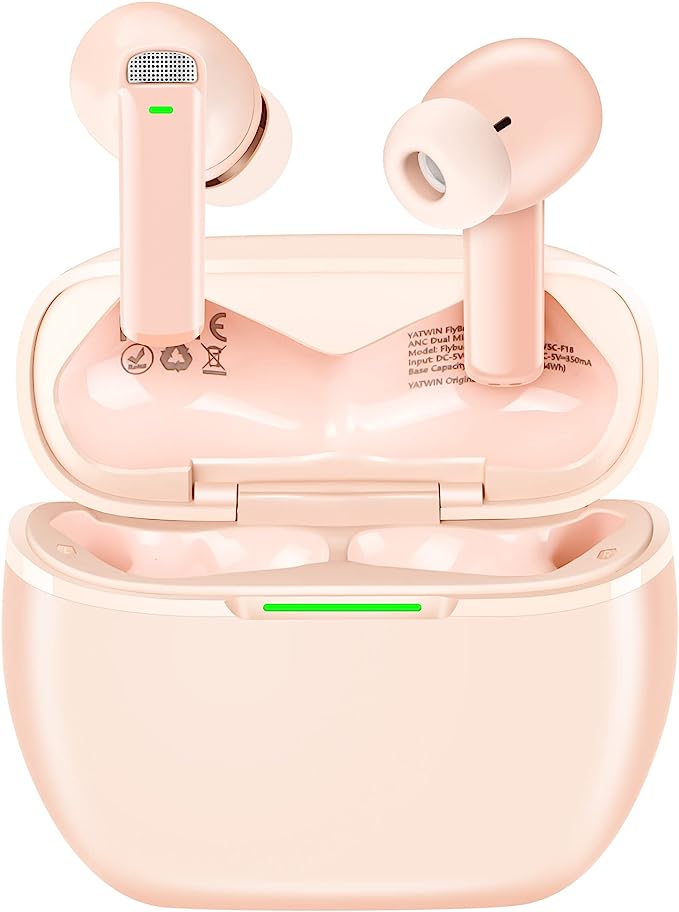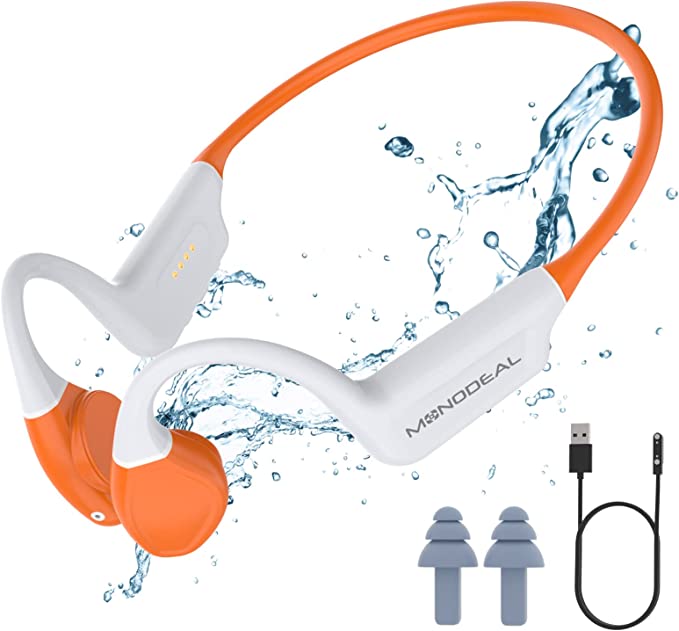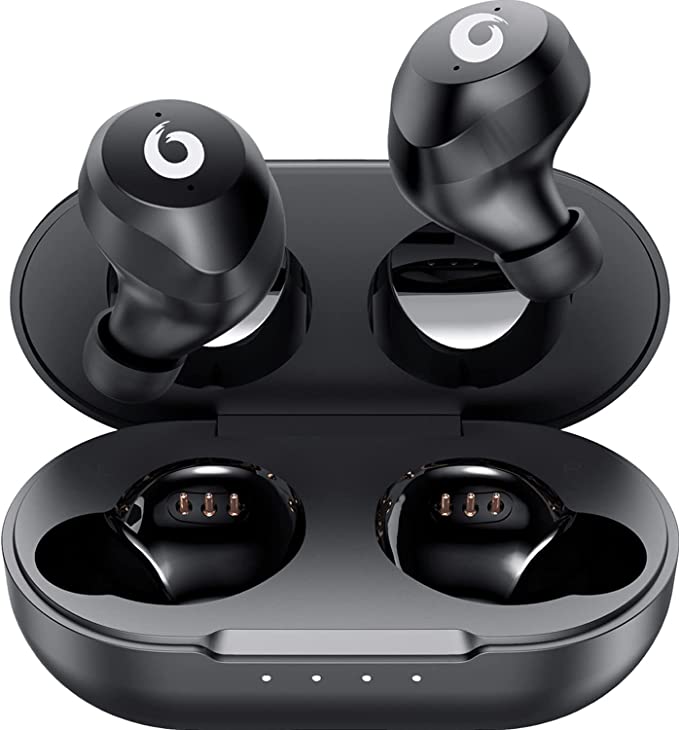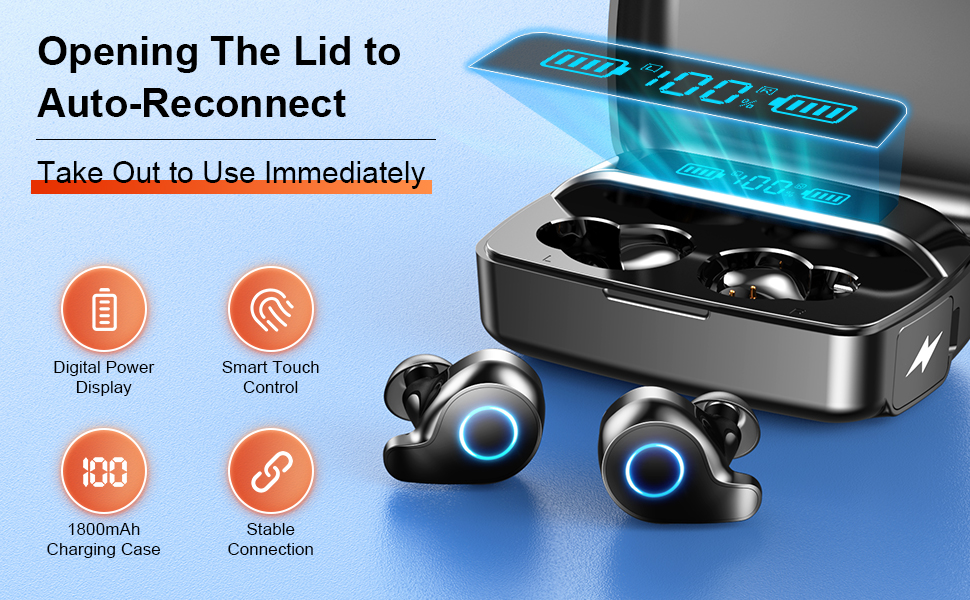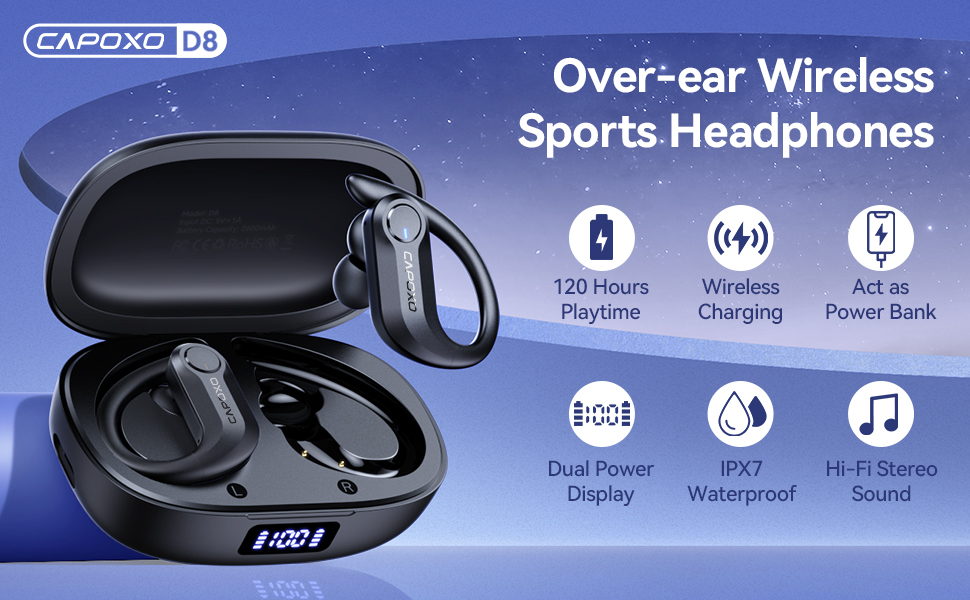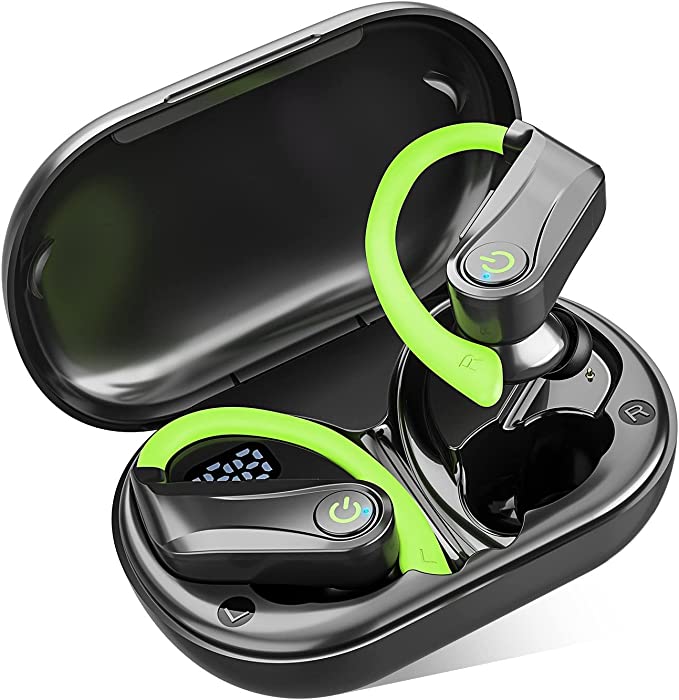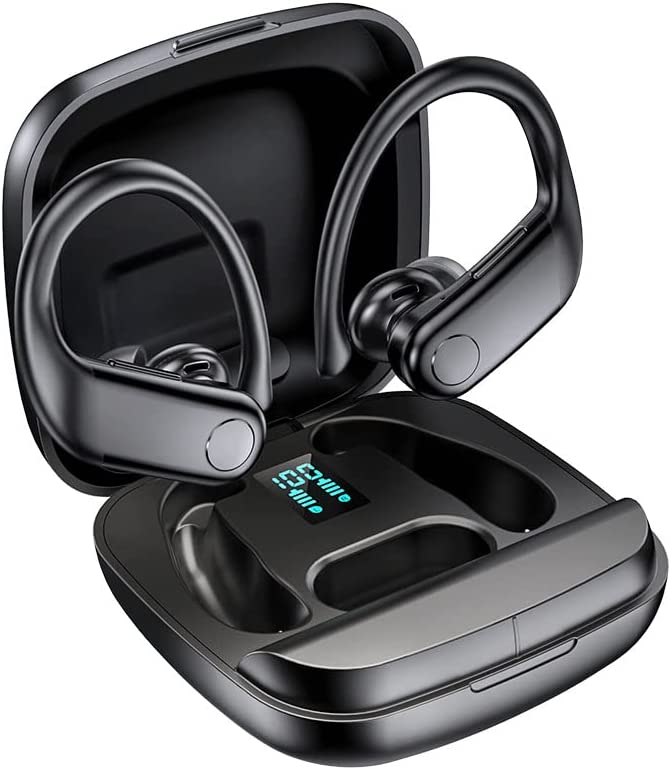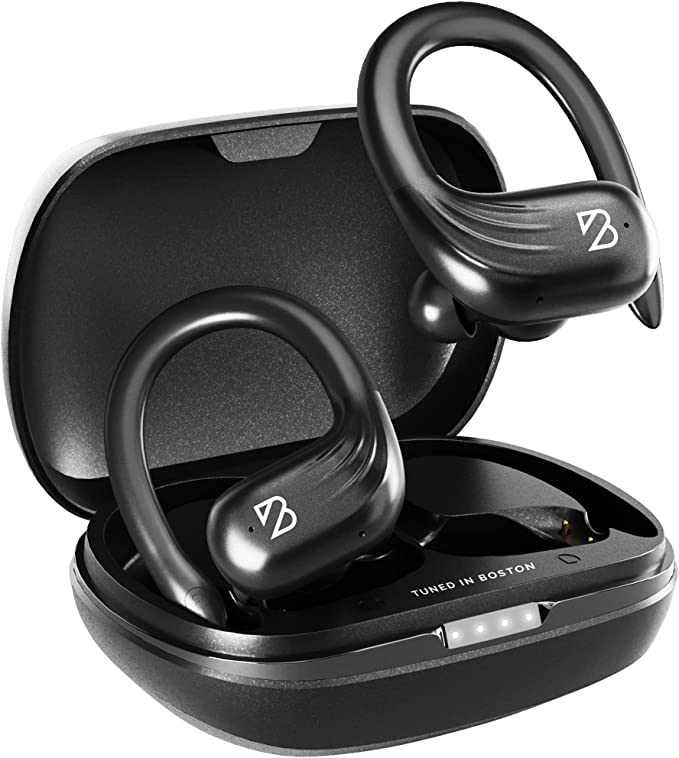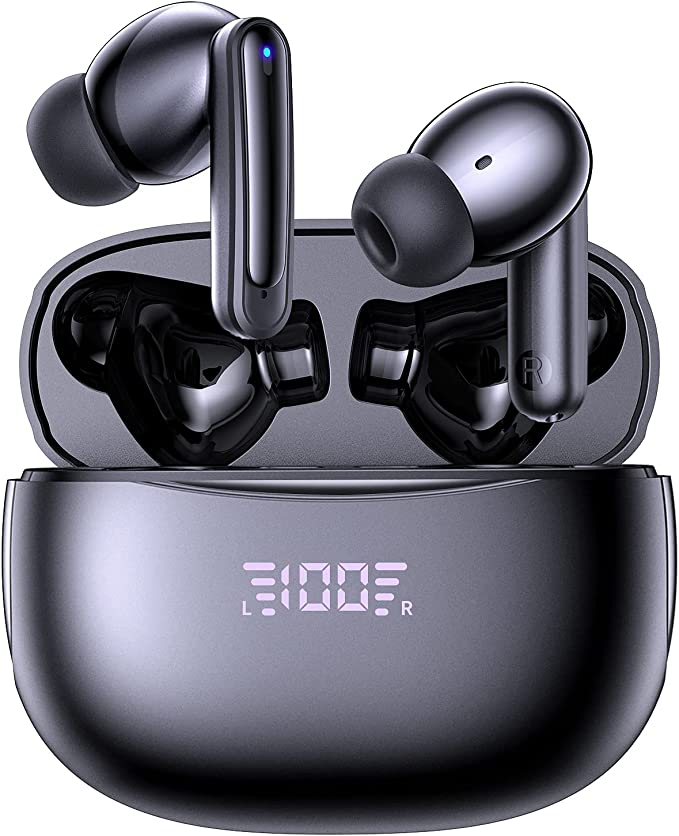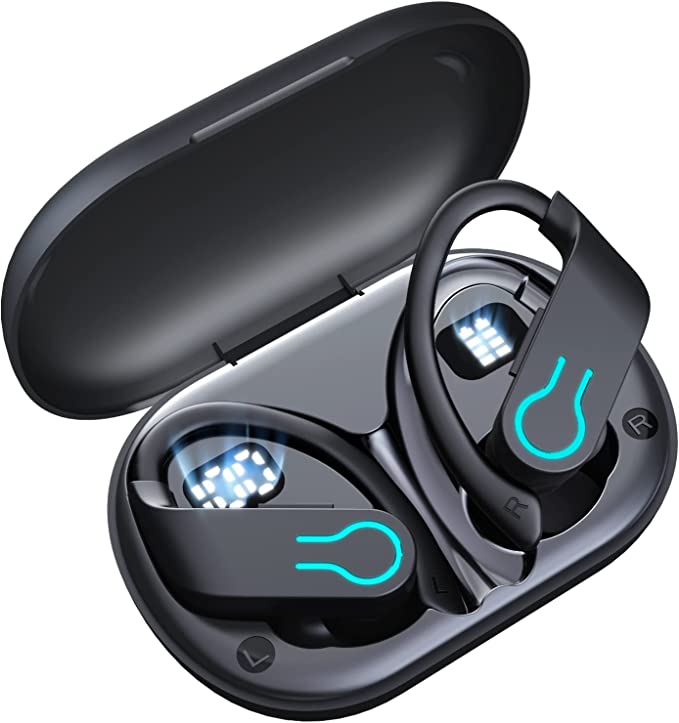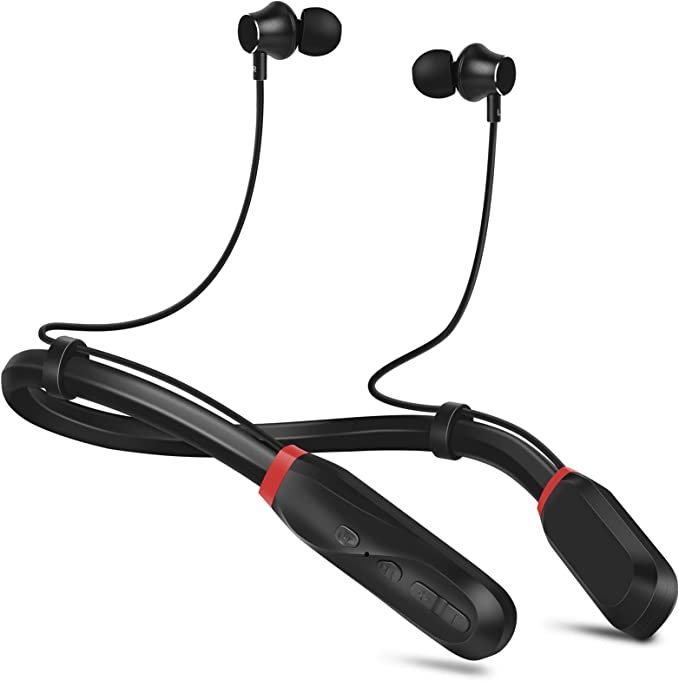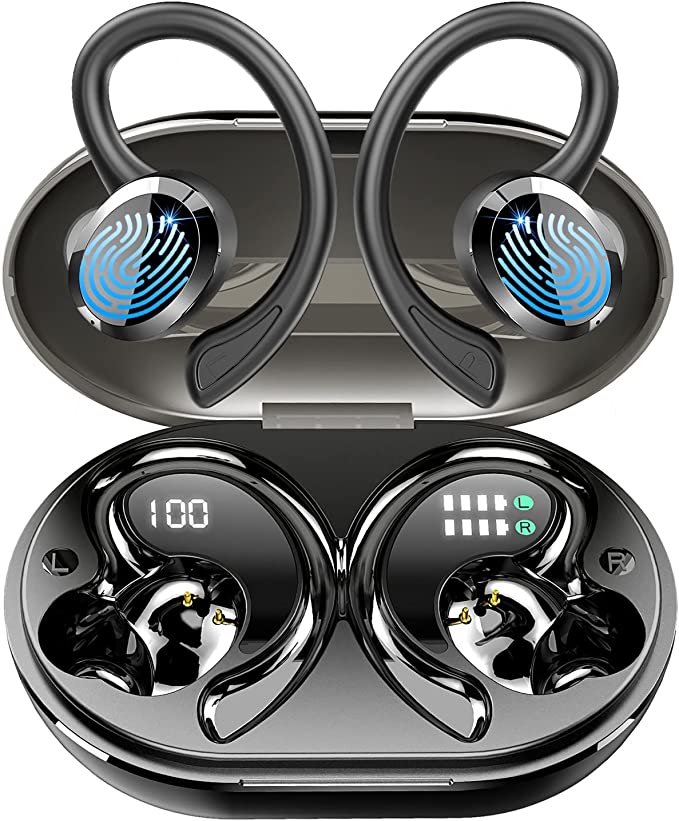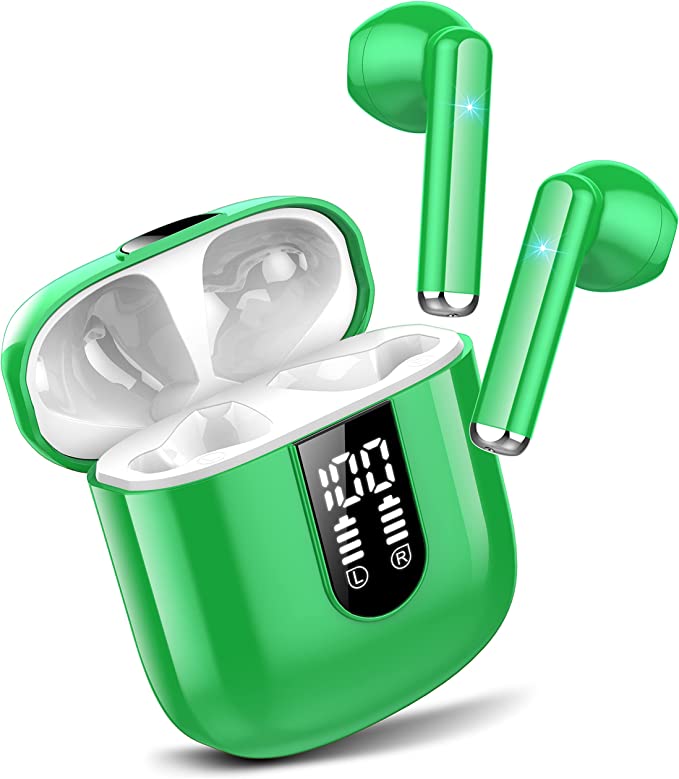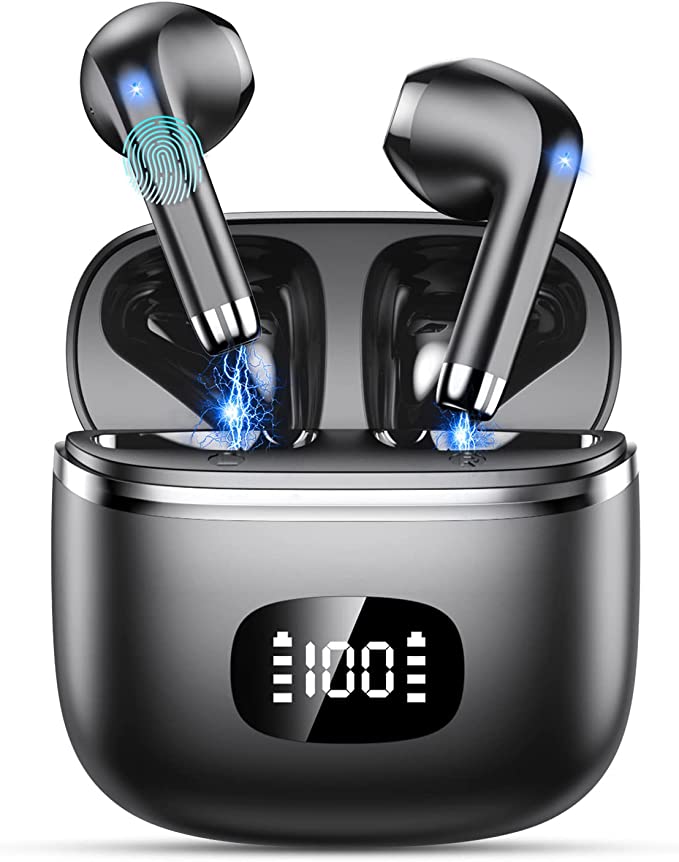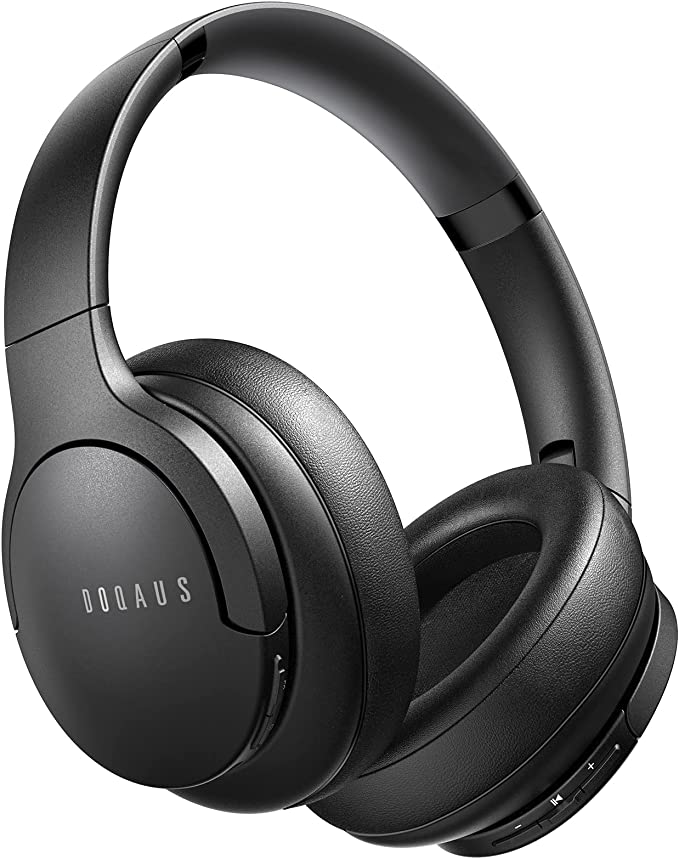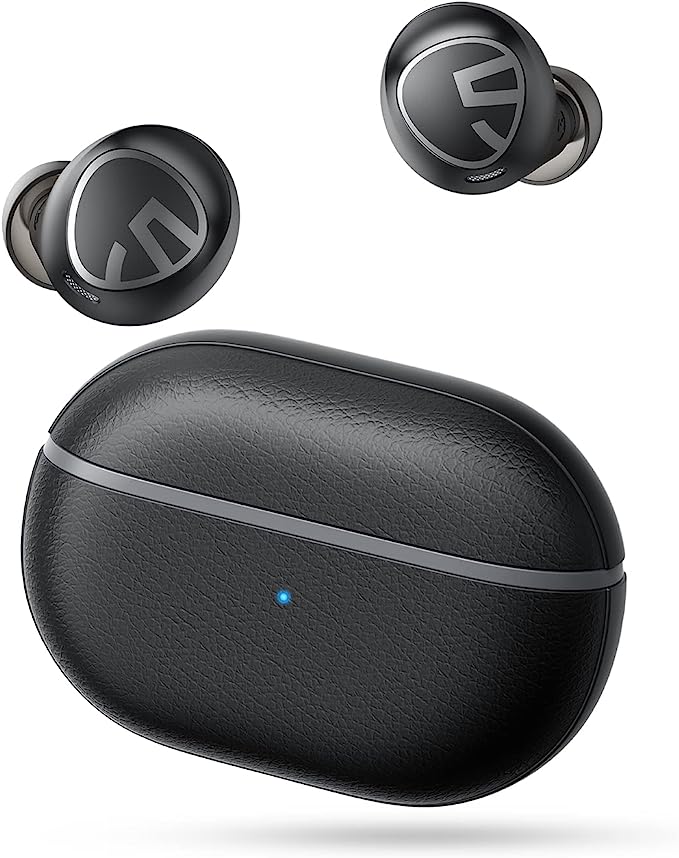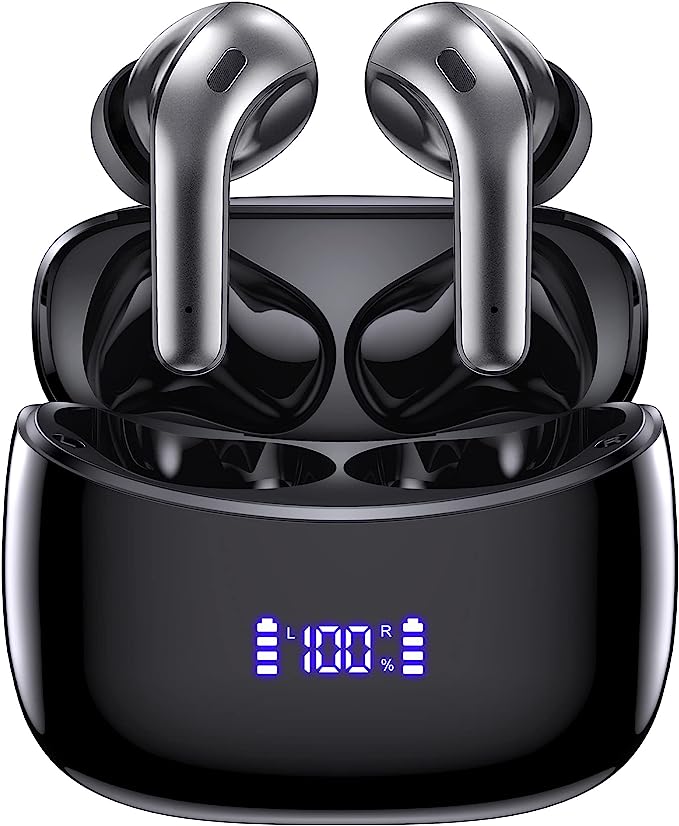The Audio Engineering of Clarity: Demystifying ENC Microphones and IPX7 Durability in Wireless Earbuds
Update on Oct. 29, 2025, 8:01 p.m.
Welcome! If you’re here, you’re likely tired of the same old frustrating cycle: a new pair of earbuds, great sound at home, and then absolute chaos when you try to take a call in a busy train station or at a bustling café. You deserve better than audio that only performs in ideal conditions.
Today, we’re going beyond the marketing hype to dive deep into the specific audio engineering features that truly deliver clarity and durability. We will explore two critical, often misunderstood technologies: Environmental Noise Cancellation (ENC) for clear calls and the robust engineering behind an IPX7 waterproof rating that guarantees your investment survives the elements. Think of this as your technical deep dive—your mentor guiding you from a consumer of features to an expert in audio performance.
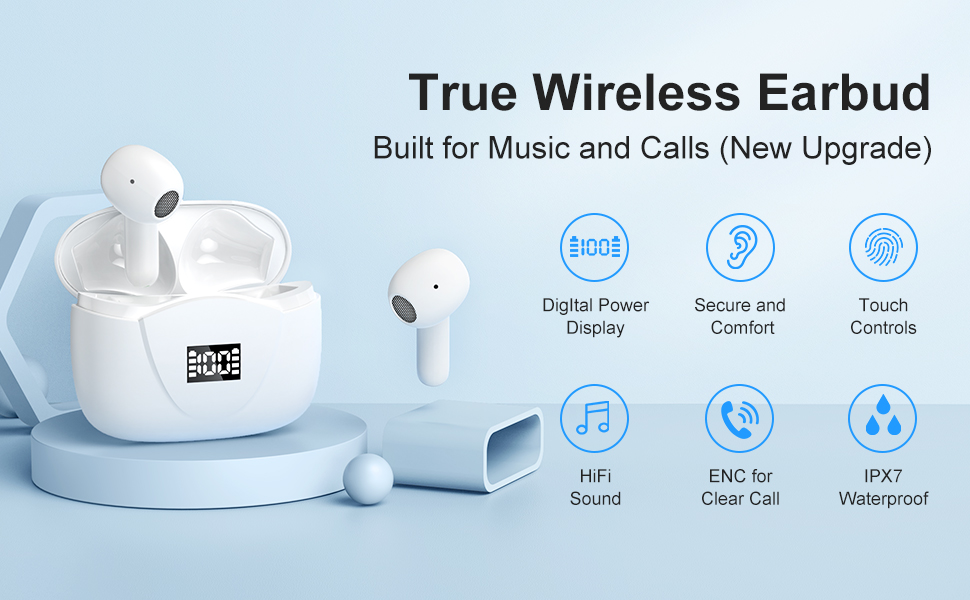
Part I: The Science of Being Heard—Understanding ENC Microphones
The age-old problem with hands-free calling in public is not hearing, but being heard. Active Noise Cancellation (ANC) helps you block out noise, but it does nothing for the person on the other end of the line. This is where Environmental Noise Cancellation (ENC) steps in.
1. The Core Difference: ANC vs. ENC
It’s crucial to understand that ANC and ENC serve fundamentally different purposes:
- Active Noise Cancellation (ANC): Uses external microphones to record ambient noise, then generates an inverted sound wave (anti-noise) played into your ear to cancel the external sound. This improves your listening experience.
- Environmental Noise Cancellation (ENC): Focuses on the outbound voice signal. It uses multiple microphones on the earbud to isolate your voice from the surrounding noise before it is transmitted. This improves the listener’s experience on the other end of the call.
2. How Dual Microphones and Algorithms Create Clarity
A high-performance ENC system, often featuring $2$ built-in microphones per earbud (as seen in models like the POMUIC S15), utilizes sophisticated Digital Signal Processing (DSP) algorithms to achieve isolation.
- Voice Pickup (Inner Mic): One microphone is positioned closer to your mouth or designed to pick up the subtle vibrations of your voice within the ear canal. This captures the primary, uncorrupted vocal signal.
- Noise Pickup (Outer Mic): The second, external microphone simultaneously records the surrounding environmental noise (e.g., wind, car horns, chatter).
- Signal Subtraction (DSP): The DSP chip then compares the two audio streams. Using complex computational models, it accurately identifies the common noise elements picked up by the outer mic and digitally subtracts them from the inner mic’s stream. This leaves a significantly cleaner and clearer voice signal for transmission, effectively suppressing up to $90\%$ of distracting background noise.
When evaluating earbuds, asking about the number of microphones and the presence of ENC technology is the first step toward guaranteeing clear, high-quality calls in dynamic environments.
Part II: Beyond the Call—A Deeper Dive into Audio Fidelity and Connection
The quality of your audio experience isn’t just about calls; it’s about the richness of your music. This hinges on two often-overlooked components: the driver size and the wireless standard.
1. The Power of the 13mm Dynamic Driver
The “driver” is the actual speaker component responsible for converting electrical signals into sound waves. Its size is a significant indicator of potential audio performance.
- Size Matters for Bass: Larger drivers, such as the $13\text{mm}$ units featured in this class of earbuds, can physically displace a greater volume of air than smaller $6\text{mm}$ or $8\text{mm}$ drivers. This translates directly to a more robust, deeper, and more impactful bass response without sacrificing the clarity of mid-range frequencies (vocals and instruments) and high notes. The result is a richer, more “immersive stereo sound” that adds depth to your music, which is essential for genres like electronic, hip-hop, or even film scores.
- Acoustic Engineering: True high-fidelity audio requires the driver, the internal acoustic chamber, and the audio codecs to work in concert. A larger driver gives the engineers more acoustic headroom to deliver that balanced frequency response from $20\text{Hz}$ to $20\text{kHz}$.
2. The Stability and Efficiency of Bluetooth 5.3
Connectivity is the backbone of the wireless experience. The shift to the latest Bluetooth 5.3 standard isn’t a mere number change; it represents fundamental improvements in efficiency and reliability.
- Enhanced Stability: Bluetooth 5.3 improves data transfer speeds and overall connection stability. For you, this means fewer audio dropouts, stutters, or lag (latency) while watching videos or listening to music, which is particularly vital for a seamless $5-7$ hour listening session.
- Power Efficiency: A major, often unheralded benefit is the improved power management. This standard is designed to optimize communication between the earbud and your device, minimizing energy expenditure. This directly contributes to longer battery life, enabling the $5-7$ hours of use per charge and the total $25$ hours with a compact charging case.

Part III: Engineered for Resilience—Demystifying the IPX7 Rating
If your daily life involves sweat, rain, or travel, durability is not a luxury—it’s a necessity. The IPX7 rating is the industry’s scientific guarantee of protection, and it’s important to know exactly what it promises.
1. Deconstructing the IP Rating
IP stands for Ingress Protection, a standardized system defined by the International Electrotechnical Commission (IEC).
- The ‘X’: The first digit relates to protection against solid particles (like dust). An ‘X’ means the product was not formally tested for dust resistance.
- The ‘7’: The second digit defines the level of water protection. A rating of $7$ means the device is protected against immersion in water up to $1$ meter ($3.3$ feet) for up to $30$ minutes.
2. Practical Reliability for Your Active Life
For a device like the POMUIC S15, an IPX7 rating means it is completely protected against heavy rain, intense sweating during rigorous workouts, and even accidental drops into shallow water (like a puddle or sink).
Crucial Note: While IPX7 is excellent for immersion, it is not designed for continuous high-pressure water exposure. Do not take them swimming or wear them in the shower. The internal seals and nanocoating are designed to withstand static water exposure, not dynamic pressure.
Part IV: The Integration of Practical Design and Power Management
Beyond the core technologies, the overall user experience is determined by thoughtful design choices. This is where engineering meets real-world application.
1. Ergonomics for Extended Use
When you’re seeking a full $5-7$ hours of usage, comfort is paramount. The $4\text{ gram}$ ultra-lightweight design combined with an ergonomic in-ear form factor is key. The design should conform to the natural contours of the ear canal, which serves a dual purpose:
- Comfort: Minimizes pressure points and ear fatigue during long listening sessions.
- Passive Noise Isolation: A snug fit naturally seals the ear canal, passively blocking out some ambient noise. This improves the perceived sound quality and enhances the effectiveness of the ENC system.
2. Smart Power Management: USB-C and the LED Indicator
Modern earbuds must address the consumer’s anxiety over battery life.
- Fast Charging (USB-C): The adoption of the ubiquitous USB-C standard for charging means faster power delivery and less clutter. Achieving a full charge in just one hour is a testament to efficient battery management and the advantages of Type-C rapid charging.
- Visual Confidence (LED Display): The LED battery display on the charging case eliminates guesswork. This small feature provides instant, clear feedback on the charge level of both the case and the individual earbuds, allowing users to plan the total $25\text{ hour}$ runtime effectively and prevent unexpected power loss.

3. Streamlining Control: The Touch Interface Trade-off
The move to smart touch controls replaces physical buttons with a precision touchpad. This allows users to manage playback, volume, and calls with a light tap, which is often more comfortable than pressing a button that pushes the earbud deeper into the ear.
- Functions: Simple commands like a single tap for Play/Pause, double tap for track switching, and a long press for Volume Up/Down offer intuitive operation.
- The Sensitivity Challenge: As with all touch-controlled devices, some user feedback suggests that the controls can be overly sensitive, leading to accidental changes when adjusting the earbud’s fit. This is a common engineering trade-off that is often addressed in future iterations via firmware updates that fine-tune the touch recognition algorithms.
Summary: A Benchmark for Integrated Performance
The market is saturated with wireless earbuds, but true performance is defined by the seamless integration of several key technologies. When you evaluate your next pair, use this technical framework:
- Call Clarity: Does it have dedicated ENC microphone technology? (Essential for professional use and noisy environments).
- Sound Quality: Does it use robust $13\text{mm}$ dynamic drivers? (Crucial for deep bass and rich sound).
- Connection: Does it leverage Bluetooth 5.3? (The standard for stability and power efficiency).
- Durability: Does it meet the IPX7 standard? (Necessary for sports and weather resistance).
A product like the POMUIC S15 Wireless Earbuds serves as an excellent case study in how these technical specifications converge to solve real-world audio problems, offering a robust and feature-rich package that is well-suited for demanding users. Understanding the science behind the specifications is your best tool for making an informed investment in your audio experience.




